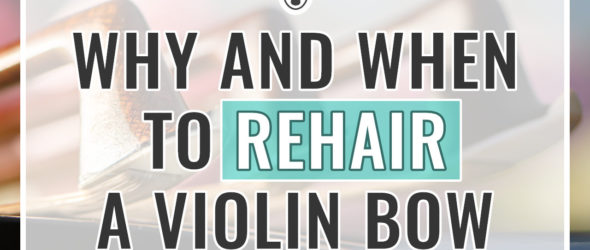Learn about the violin bow hair and the signs that will tell you to rehair your bow!
Violin bows are made of horsehair and over time, the hair can get worn down, dirty, break off, or just not produce a good sound on the violin. Take care of your bow regularly and you won’t have to rehair the bow often or worse, replace a broken bow.
Bow hair is very fine and responsive to the natural oils on our hands so it is important to never touch it. Using rosin every day on the hair can also accumulate and build up gunk that can affect the sound. Moreover, where you store your instrument also matters. In this article, you’ll learn how to take great care of your bow, when to think about taking it to the shop to get rehaired, and why rehairs are needed in the first place.
Why Rehair a Violin Bow?
Violin bows need to get rehaired when the hair no longer produces a great sound on the violin. Reasons include: the hair being too dirty, not having enough hairs left on your bow, needing to use more rosin than usual but still not getting a good sound, or not tightening correctly.
Part of getting your bow rehaired is just regular maintenance. A violin rehair is typically required as the result of touching the horsehair too often, thus making the hair too dirty or greasy to play. Look for how black the hair looks. Another reason can also be a result of breaking too many hairs from the bow (this naturally occurs as they get worn out). Another way you might notice that it’s time to rehair your bow is that it is impossible to tighten the hair. And finally, if you do not keep your violin in a location with recommended temperature or humidity, the hair can get oxidized or even might get infested with mites.
Temperature and humidity make a big impact on bow hair tension. The drier the environment, such as in the winter, the more the hair shrinks. You would notice that the bow’s increased tension will make it harder to loosen the hair. If you notice your bow hair is too loose or too tight even while you are using the screw, take the violin to a luthier at a professional shop.
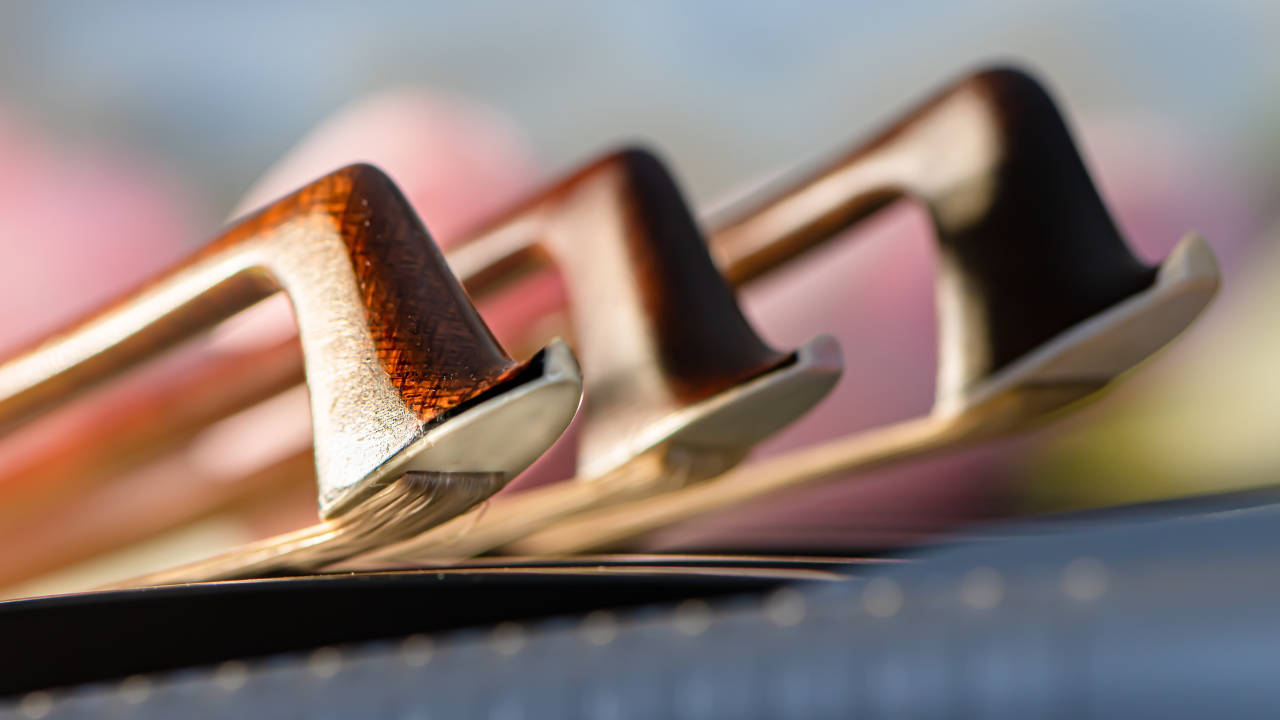
When Do You Need to Rehair the Bow?
If you are a hobby player, I recommend that you rehair your bow about every 5 years. A professional player should rehair the bow every 6 months – 1 year. When to rehair the bow depends on what kind of music and how often you play, the quality of horsehair used, storage conditions, and how do you care for the bow on a daily basis.
The frequency of rehairing your bow depends on whether you play every day for hours, also on playing rougher pieces with accents, or not taking precautions with the bow. You are probably OK with not getting a rehair as long as the bow hair is in the color it came (typically a cream white color), the bow is tightening and responding to rosin evenly, and that you can practice without noticing a difference. Some hobbyists might keep the same bow hair for even 10 years if properly taking care of it.
8 Tips for Bow Care and Maintenance
1. Don’t touch the horsehair!
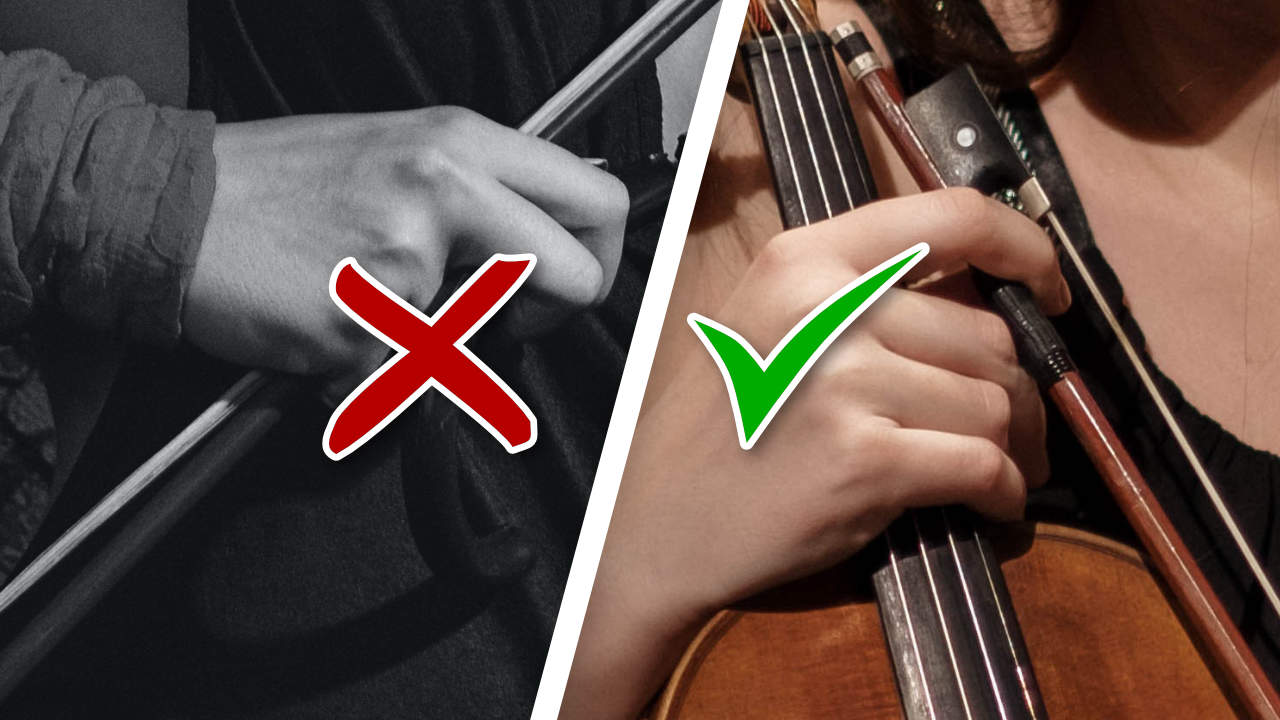
The number one most important tip for bow maintenance is to avoid touching the hair. The natural oils in our fingers get soaked up by the hair and the rosin will stop sticking to the bow hair. You will not be able to make a sound on the violin when you pull the bow across the strings!
2. Don’t tighten the bow too much
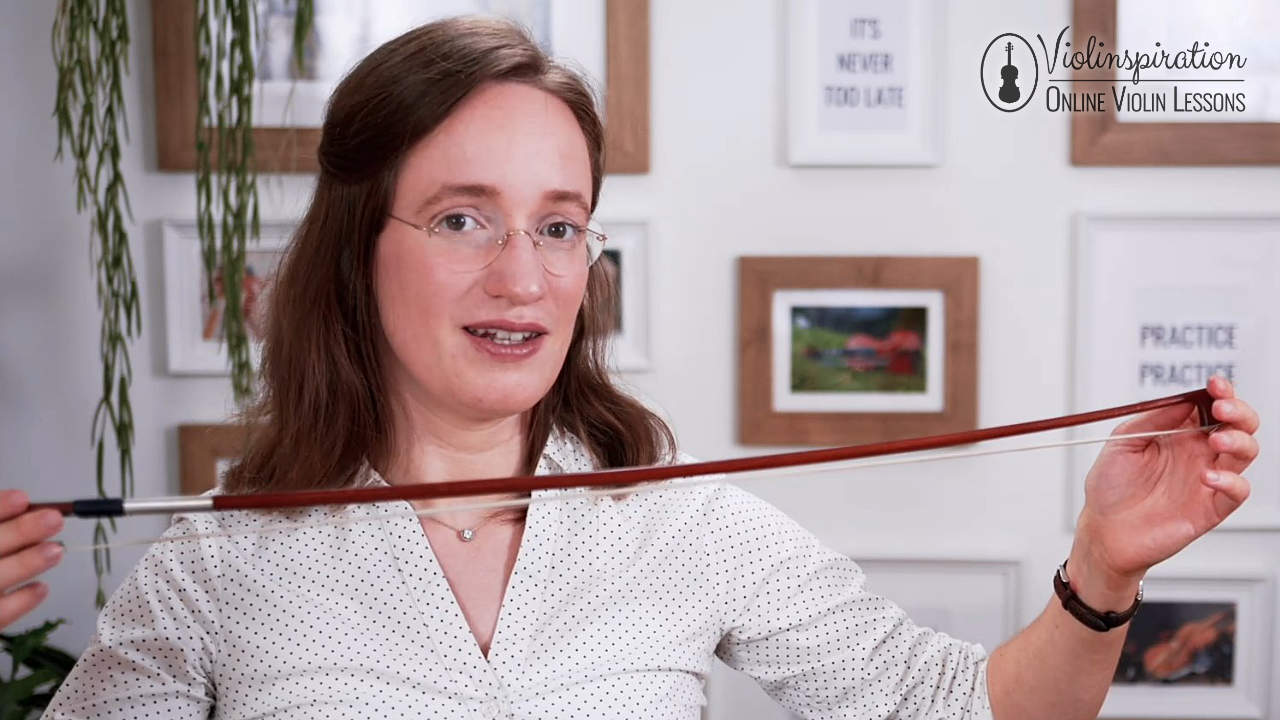
Overtightening is the first step to permanently damaging your bow! If you tighten the bow too much, you will notice the stick warping. This puts the bow at high risk for breaking and needing a replacement. You will want to turn the screw clockwise just enough to get the hair off the stick comfortably while you press the bow down on the strings. I recommend that you the bow until you are able to fit a pencil through the space between the stick and the hair.
3. Remember to loosen the bow after playing
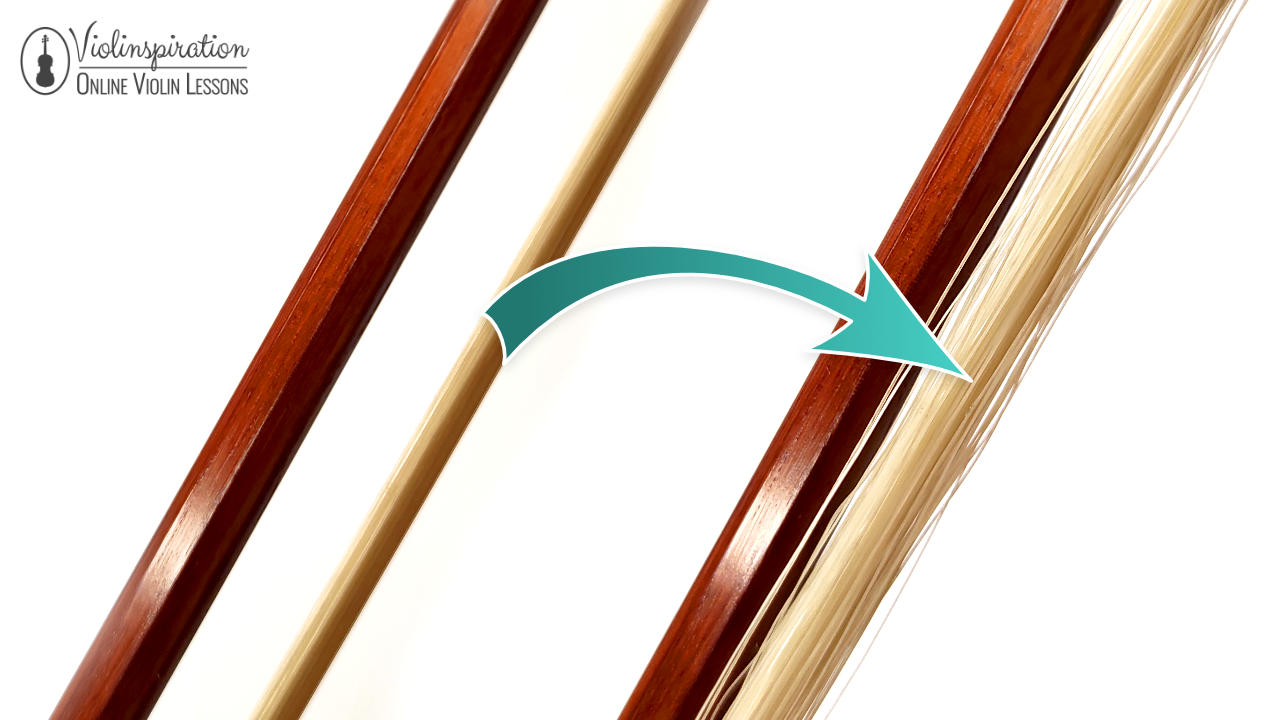
It is highly recommended to always loosen the bow after practicing so the hair is loose overnight. Bow hair is very vulnerable to long-term stress and keeping the hair tight puts a lot of stress on it. Think about someone pulling your hair straight back for hours at a time. You want to keep it loose enough that it is floppy. If you know that you will be in a dry or hot environment, you might want to loosen the hair even more.
4. Rosin the Bow Evenly
As a general rule, when rosining the bow, use long even strokes from frog to tip. Try not to only rosin one section of the bow at a time as this creates unevenness. However, you might need a little extra rosin at the frog because your right-hand fingers sometimes touch the hair. You can check by seeing if the hair near the frog is getting greasy or darker. You should rosin just enough to get a clear tone and do this about every few days.
Click here to check how a violin bow sounds like when with no rosin, too little, too much, and with the right amount of rosin!
5. Choose a good rosin
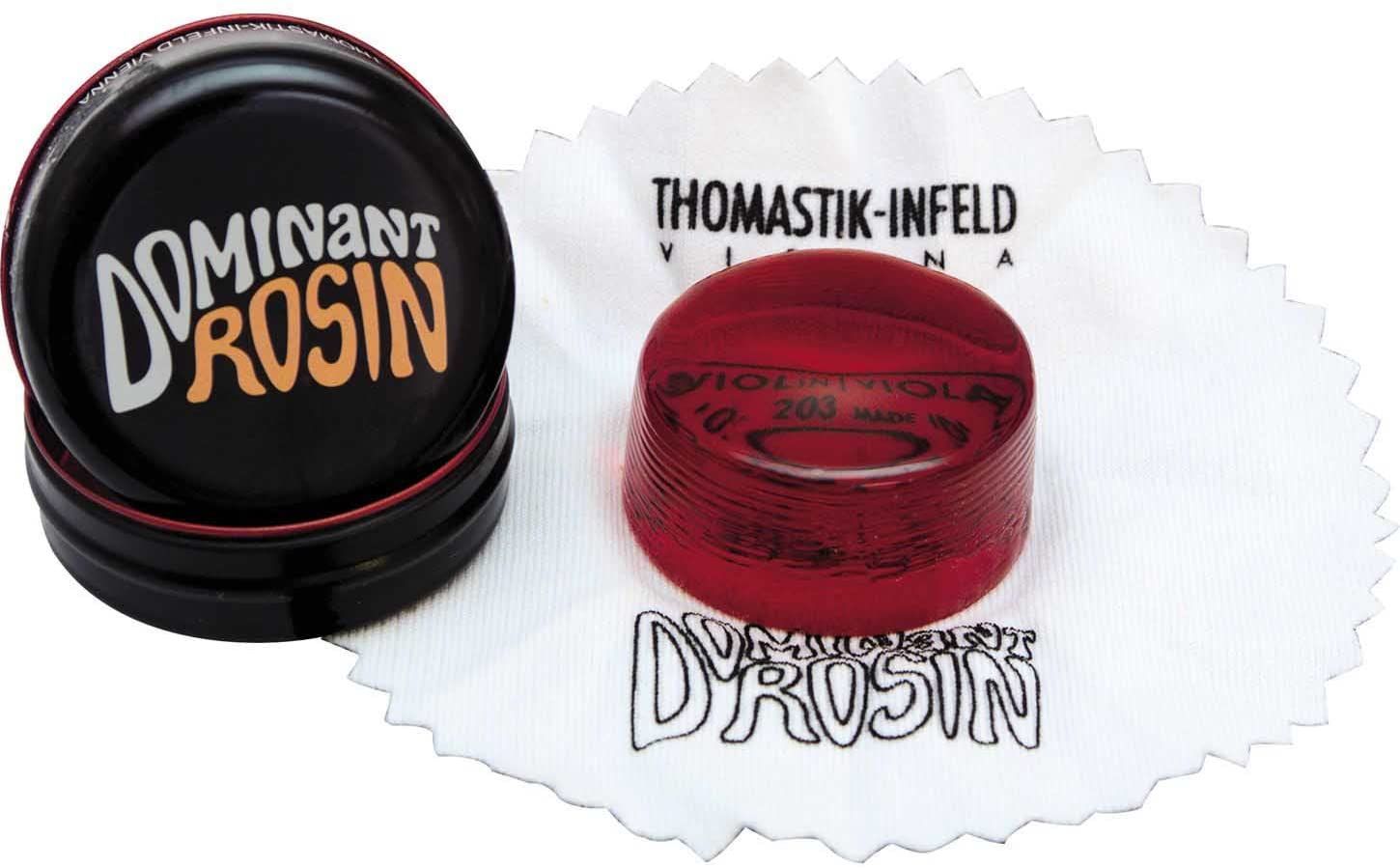
Choose good rosin that will help you produce a smooth tone. Student-grade rosin, often found in the violin kit, is often cheaper but can make a rougher sound. Typically the lighter in color the rosin is, the less dense and sticky it is which can be better suited for violin and viola bows, especially in a humid climate. Bass and cello bows tend to prefer darker rosin, although there are versions of dark rosins also for violins. Since rosin is not that expensive, it can be worth experimenting with different types.
I personally use and enjoy the Pirastro Goldflex Rosin and recommend it to most of my students, because it works in any climate and sounds good on most violins.
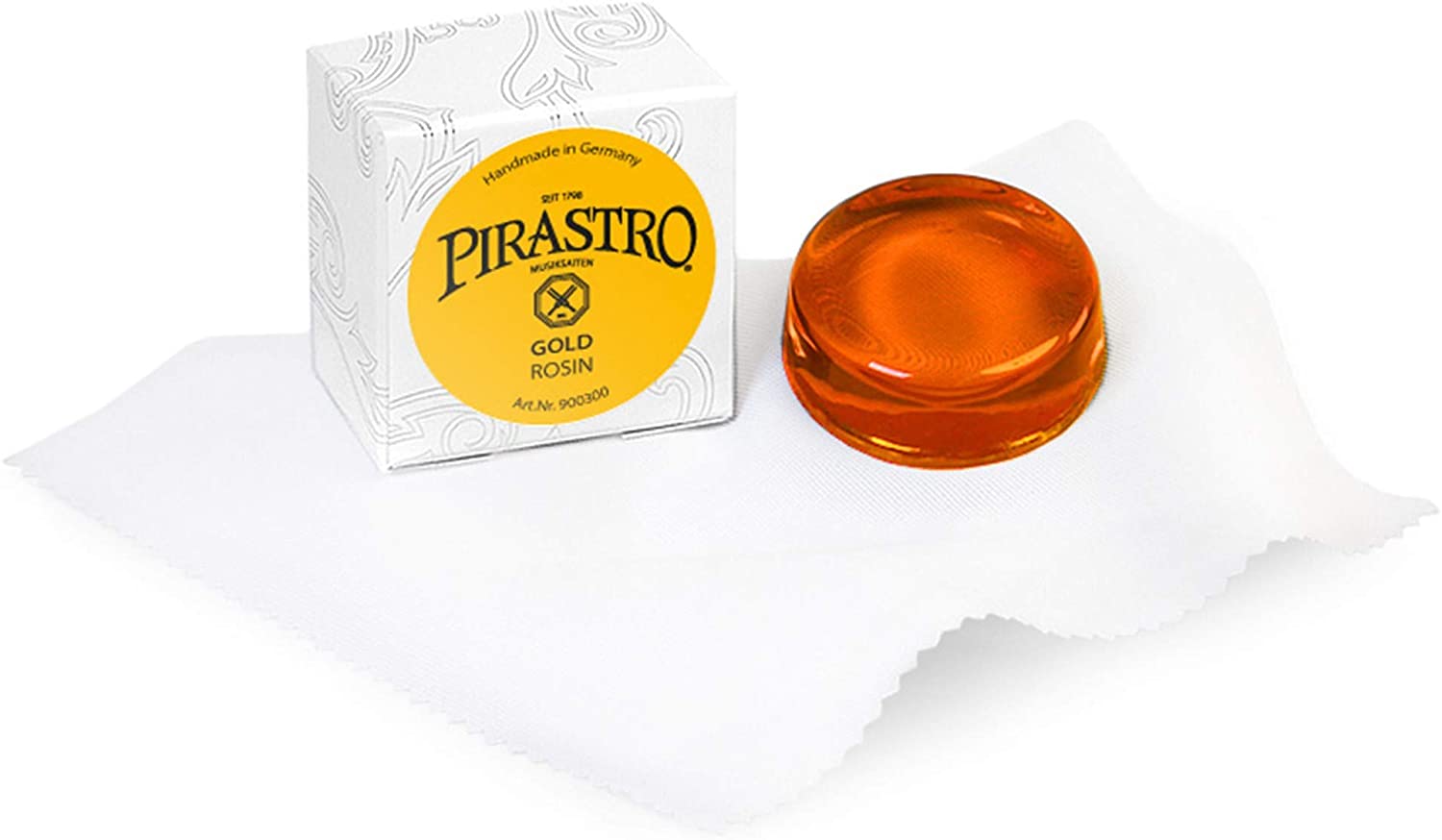
Pirastro Goldflex Rosin
GET IT NOW
Support us for more FREE content No extra costs for you Recommended by Violinists
6. Wipe off rosin dust after you practice
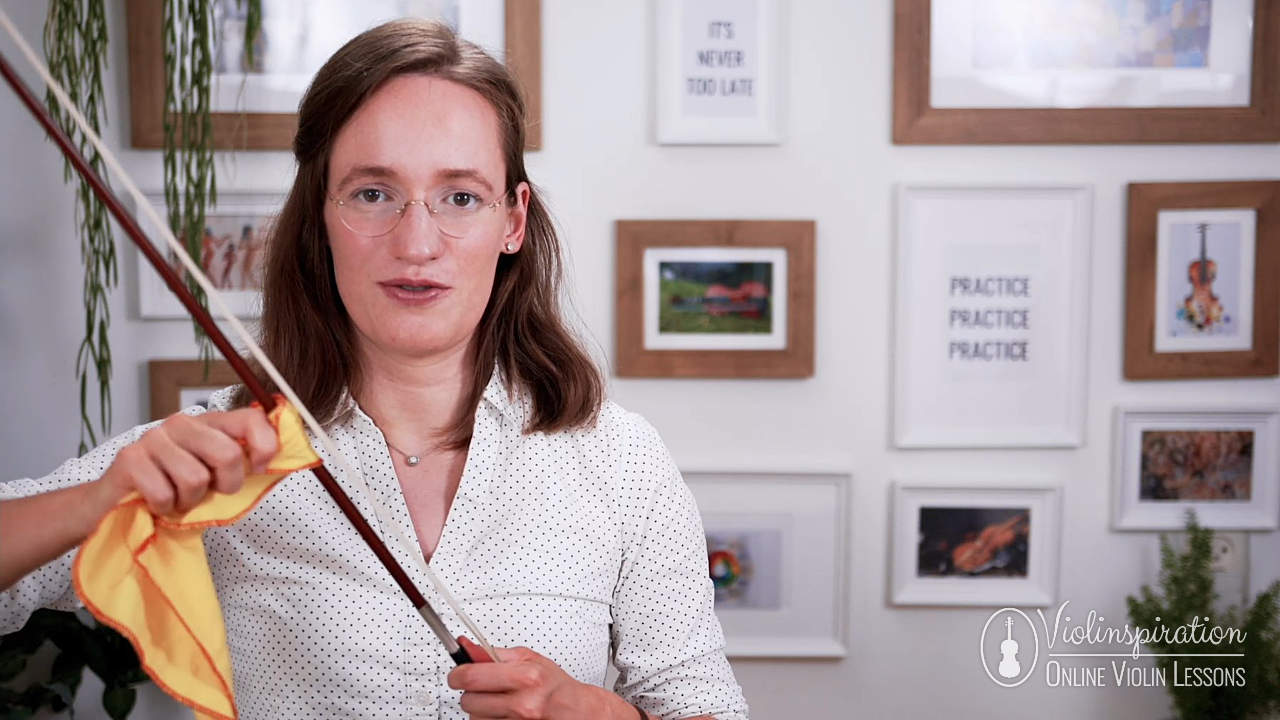
Rosin dust can build up on your bow and your violin so it is important to use a microfiber cloth to remove the dust. After you are finished practicing, leave the bow hair tight and use the microfiber to polish the surface of the stick. Then, use the same cloth to wipe down strings and the area between the fingerboard and the bridge. This will keep your bow, the instrument, and your strings clean.
Read my article “How to Clean a Violin – a Step-by-Step Guide” to get more tips on cleaning your violin.
7. Cut broken bow hairs correctly
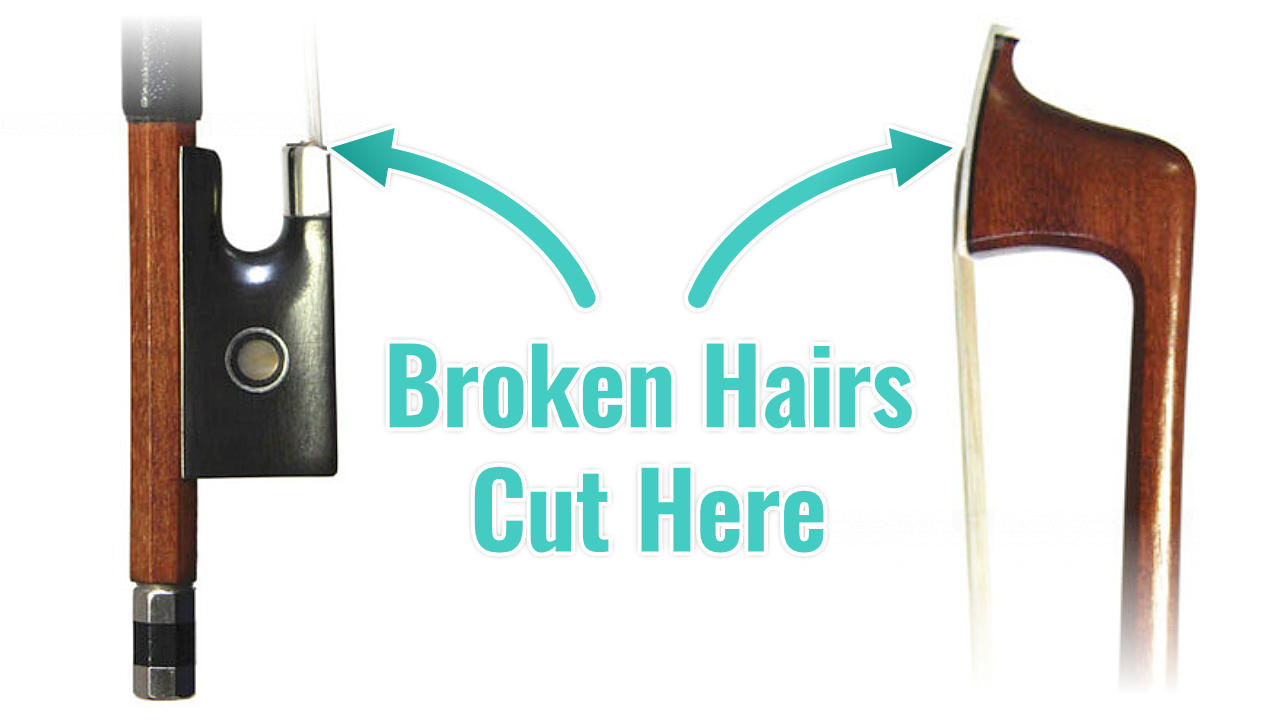
If you break a hair, there is no need to worry. With hundreds of hairs, one or two broken ones won’t affect your playing. However, when it happens, do not pull the hair(s) out of the tip or the frog. Get a pair of scissors or even nail clippers and cut the hair as close to the frog and the tip as possible. The overall hairs can become loose if they are continually getting yanked out.
8. Check for wear
It can be helpful to regularly inspect your bow. It can be easier to fix problems before they become major issues so check the following:
- Does the hair look greasy and turning black?
- Does it still respond to rosin?
- Is the screw working smoothly to change the tension?
- Are hairs coming loose at the tip or the frog?
- Is one side of your bow losing hair more often than the other side?
If you answer yes to one or more questions, then probably you have to schedule a visit at the luthier’s or in the music shop.
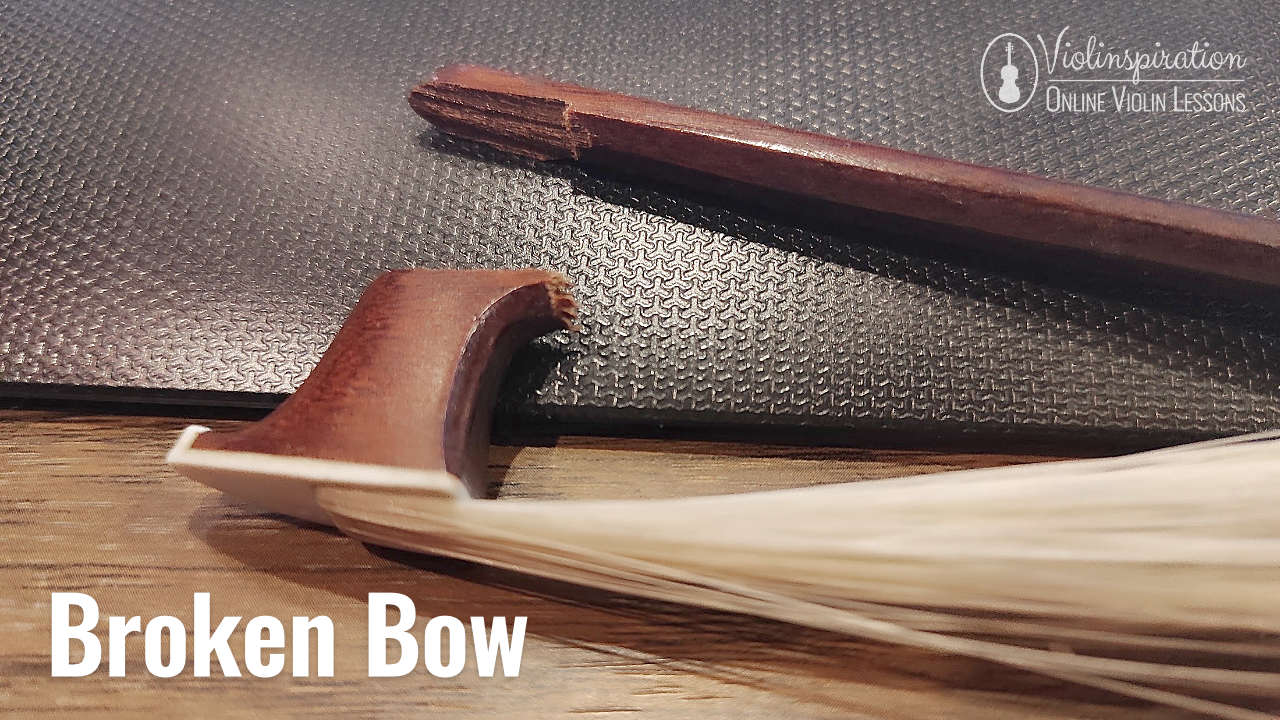
FAQ
How much does a violin bow rehair cost?
A violin bow rehair cost about $50-100 on average. This can depend on what material your bow is made of, whether you go to an experienced luthier, and what is the quality of your bow in the first place.
Should you clean your violin bow hair?
It is better to rehair a violin bow than to clean it. Cleaning might cause damage to the bow stick, which may lead to buying a new bow. Instead, regularly wipe down your bow and untighten the violin bow hair after your daily practice.
Some people wash the bow hair with an alcohol-soaked toothbrush to remove rosin build-up, but I do not recommend doing this. It is risky and time-consuming. Once you need a rehair, it is easiest to go to a luthier.
Why can’t you touch the hair on a violin bow?
You cannot touch the bow hair because the natural oils from the skin will stay on it. The bow hair will get greasy and the rosin will stop sticking to it. As a result, the violin won’t sound very well as there will be not enough friction between the violin strings and the bow hair.
Are horses killed for violin bows?
No! Horses are not killed for the reason of collecting the horse hair. They either get haircuts like we do, or are already passed when the hair is collected.
If you are curious about the materials used for making violin bows, check my article “What are violin bows made of?” and also “Violin Bow Materials and Which Ones Are Best“, especially if you are looking for a product recommendation.
Conclusion
I hope you learned a little about how to best maintain your bow, how to check when you might need a rehair, and why rehairs are part of regular maintenance. Take these tips and apply them to your daily practice. Ultimately, if you are taking good care of your bow but the bow is not responding well with grip to the string, first try to rosin the bow and if that does not work, take it to your local shop. And finally, in different climates and seasons (like winter), you will want to keep an extra eye out for bow tension.
